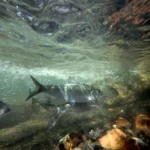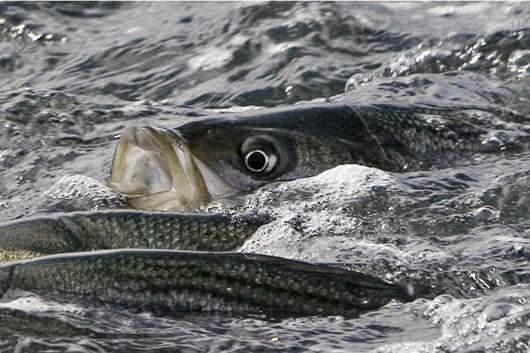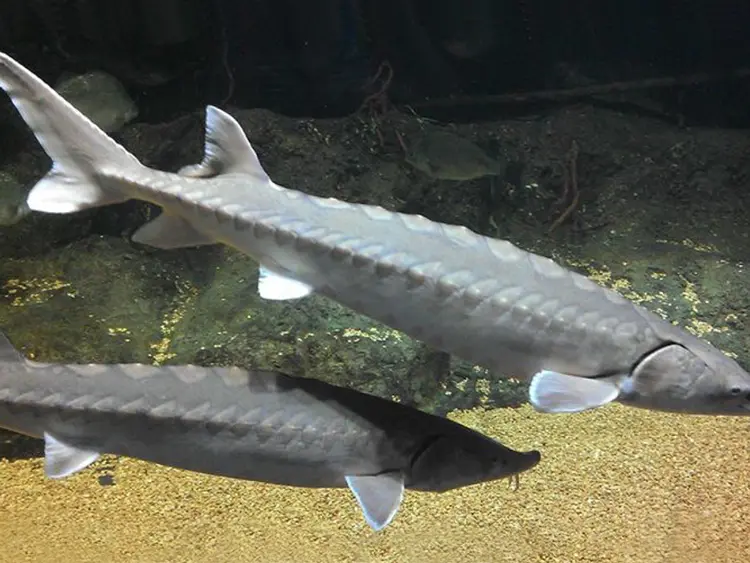
NYSDEC’s updates to threatened species must go further to protect biodiversity
November 13, 2024
Striped bass recovery remains below targets
November 13, 2024Environmental organizations bring lawsuit against New York for Endangered Species Act violation that imperils iconic Atlantic sturgeon
This press release was originally published at Riverkeeper.org. Read the original release here.
_____
New York – Today, the Delaware Riverkeeper Network and Riverkeeper filed an Endangered Species Act (ESA) lawsuit to force New York to address the illegal capture and killing of endangered Atlantic sturgeon by commercial fishing operations. Parallel lawsuits were also filed by the two groups against Delaware and New Jersey.
Atlantic sturgeon in the Delaware River and Hudson River were listed as endangered under the Endangered Species Act in 2012. As a result, it is illegal to catch, harm, injure, or kill Atlantic sturgeon in the absence of special authorization from the federal National Marine Fisheries Service – also called NOAA Fisheries. However, commercial fisheries approved and permitted by the state of New York have caused Atlantic sturgeon to be caught, harmed, injured, and killed as bycatch. The level of scientifically documented bycatch, as well as a recognition that high levels of bycatch are unaccounted for due to a lack of required monitoring is leaving the future of these ancient creatures in perilous question, according to the organizations.
Maya van Rossum, the Delaware Riverkeeper, said “The Atlantic sturgeon of the Delaware and Hudson Rivers are at imminent risk of extinction. While the two sturgeon of the two rivers have been combined into what is called the New York Bight for regulatory purposes, each river population is distinct and unique. The Delaware River population, when viewed on its own, is the most endangered sturgeon population in the world, with less than 250 spawning adults left. It is shocking that for over a decade both the states and the federal government have had heightened authority to protect the Atlantic sturgeon of our region and have intentionally failed to act in defense of this ancient fish. Killed by dredging, deepening, vessel strikes, habitat loss, pollution and bycatch due to multiple commercial fisheries – at every turn our state and federal agencies have failed to take action to protect the sturgeon. And so, at every turn, the Delaware Riverkeeper Network has been stepping up to protect the sturgeon from all of these impacts, with bycatch being just the most recent effort to save our sturgeon. It is well within the power of the states and NOAA Fisheries to take action to protect the Atlantic sturgeon from bycatch, and they should have been doing so all along. We will not sit idly by and be placated with arguments of paperwork and timelines while the sturgeon continue to needlessly die. The Atlantic sturgeon need protection today if future generations are ever going to see them swimming in the Delaware River for tomorrows to come.”
Tracy Brown, the Hudson Riverkeeper, said: “The Atlantic sturgeon, an ancient sentinel of the Hudson River, stands on the brink of extinction due to a failure of regulatory oversight. Our legal action is not merely about enforcing compliance; it’s about confronting a systemic failure that has jeopardized a species teetering on the edge of disappearance. The states of New York, New Jersey, and Delaware have had ample time to rectify their violations and protect these critical fish, yet they have failed to act decisively. We are determined to see that the promises of the Endangered Species Act are upheld and that the Atlantic sturgeon can once again thrive in their historic habitats.”
For over 200 million years, the wondrous Atlantic sturgeon have roamed our waters, but their numbers have declined precipitously since the 1900s due to overfishing and impacts from human activity. When the sturgeon are caught as bycatch, they can die quickly from the interaction with the nets and fishers, or the stress of the experience can result in death later on or prevent them from being able to reproduce and replenish their population numbers.
As documented by scientific research, the “taking” of Atlantic sturgeon as a result of bycatch presents a serious impediment to the species’ recovery. Fisheries employing trawl nets or gill nets present particular danger to sturgeon that get caught up and are unable to escape. Fisheries of particular concern include, but are not limited to, summer flounder, striped bass, weakfish, and winter skate.
In New York and New Jersey, Atlantic sturgeon are at higher risk of bycatch than other coastal subregions. Data shows 64 percent of bycatch of Atlantic sturgeon from otter trawling operations occurs in New York State waters and a majority of these incidents are known to occur along the western portion of Long Island’s Atlantic coast.
New York, New Jersey, and Delaware’s failure to address bycatch has left the Atlantic sturgeon in perilous straits, teetering on the edge of extinction. This suit by Delaware Riverkeeper Network and Riverkeeper is a fight to bring them back.
Background:
On July 18, the two organizations filed 60-Day Notices of intent to sue against each of the three states for their failure to obtain incidental take permits for commercial fisheries operating within the known habitat of the endangered Atlantic sturgeon, as is required by the ESA. Under the ESA, before a citizen suit can be brought against a violator, that violator must be served first with a 60-Day Notice to allow them to redress the violation to avoid litigation. At this time, none of the three states that were sent a 60-Day Notice have redressed their violations by obtaining the proper Section 10 permit pursuant to the ESA.
On July 18, the two organizations filed 60-Day Notices of intent to sue against each of the three states for their failure to obtain incidental take permits for commercial fisheries operating within the known habitat of the endangered Atlantic sturgeon, as is required by the ESA. Under the ESA, before a citizen suit can be brought against a violator, that violator must be served first with a 60-Day Notice to allow them to redress the violation to avoid litigation. At this time, none of the three states that were sent a 60-Day Notice have redressed their violations by obtaining the proper Section 10 permit pursuant to the ESA.
Four Distinct Population Segments (DPS) of Atlantic sturgeon were listed as endangered in 2012, one being the New York Bight DPS, which consists of the Delaware River and Hudson River populations combined. Where there was once 180,000 female Atlantic sturgeon in the Delaware River population, currently there are less than 250 spawning adults left. For its part, the Hudson River’s wild adult Atlantic sturgeon population is estimated at around 450 individuals, down from 870 in 1998.
Contacts:
Maya van Rossum
the Delaware Riverkeeper, Delaware Riverkeeper Network
215-801-3043 (mobile); [email protected]
Maya van Rossum
the Delaware Riverkeeper, Delaware Riverkeeper Network
215-801-3043 (mobile); [email protected]



